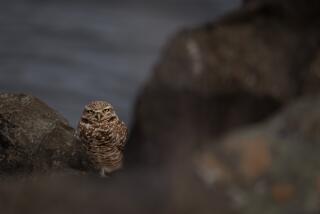Endangered butterfly could get new lease on life with breeding program at San Diego Zoo
An endangered butterfly could get a new lease on life thanks to a breeding program at the San Diego Zoo.
The population of the Quino checkerspot butterfly, known for its distinctive checkerboard-patterned orange, black and white wings, has drastically declined because of urban development that has diminished its habitat, experts said. It’s on the brink of extinction.
According to the Center for Biological Diversity, one biologist described the situation as akin to having “four engines out and about 10 seconds to impact.”
Once one of the most common butterflies in Southern California — its range was from the Santa Monica Mountains to Baja — the tiny Quino is hardly ever seen. Experts blame drought and development for the species’ decline.
“Urban and agricultural development, invasion of nonnative species, habitat fragmentation and degradation, increased fire frequency and other human-caused disturbances have resulted in substantial losses of habitat throughout the species’ historic range,” said experts with the U.S. Fish and Wildlife Service.
Paige Howorth, associate curator of entomology at the San Diego Zoo, said that some years only one or two of the insects with the 2-inch wingspan are spotted.
Last year, there were not enough found in the wild to start a recovery population in the zoo’s butterfly conservation lab. This year, five males and seven females — as well as some eggs — were found.
They are being hand-fed nectar fortified with vitamins and minerals, and tiny larvae are provided with fresh dwarf plantains, which are also being grown in the lab.
Howorth said staff members are doing everything they can to ensure the butterflies can successfully reproduce.
“My hope for this project is a successful breeding program for the Quino checkerspot butterfly, and that they will be reintroduced into restored habitat and become as common as they once were,” she said.
debbi.baker@sduniontribune.com
Baker writes for the San Diego Union-Tribune
MORE FROM SCIENCE
Why the city mouse and the country mouse have different genes
Coffee lovers rejoice: 4 reasons why coffee is good for your health
Two-year project will study air pollution in San Ysidro from cars idling at the border






